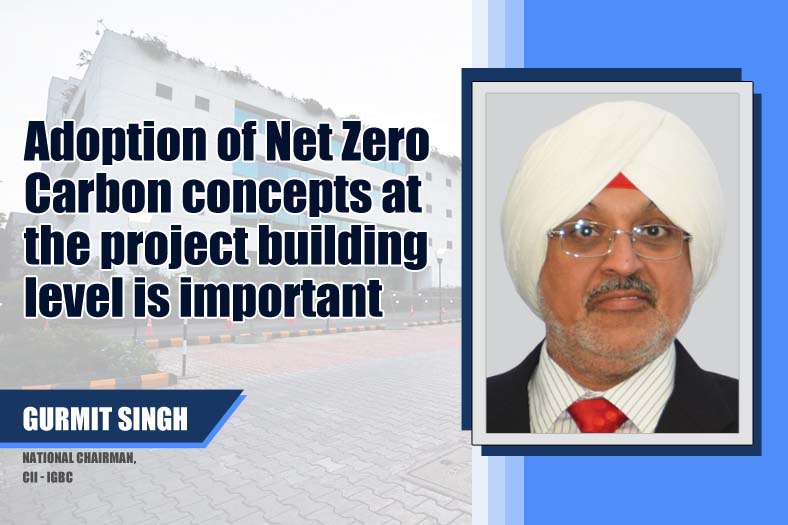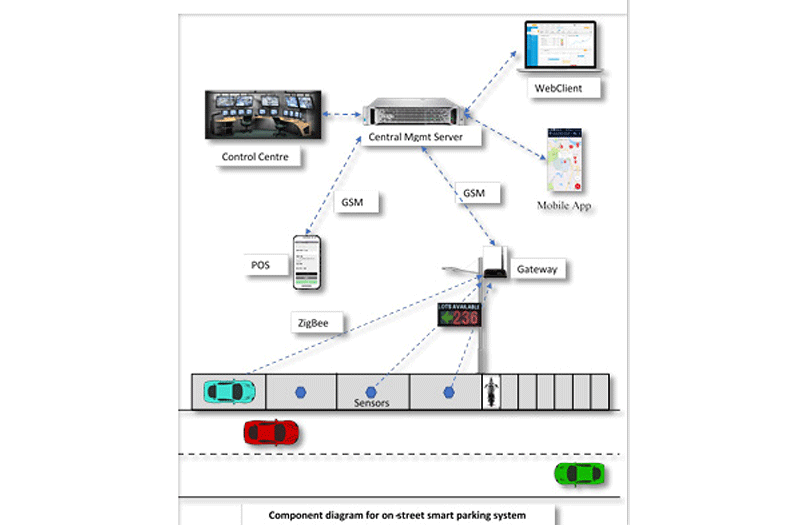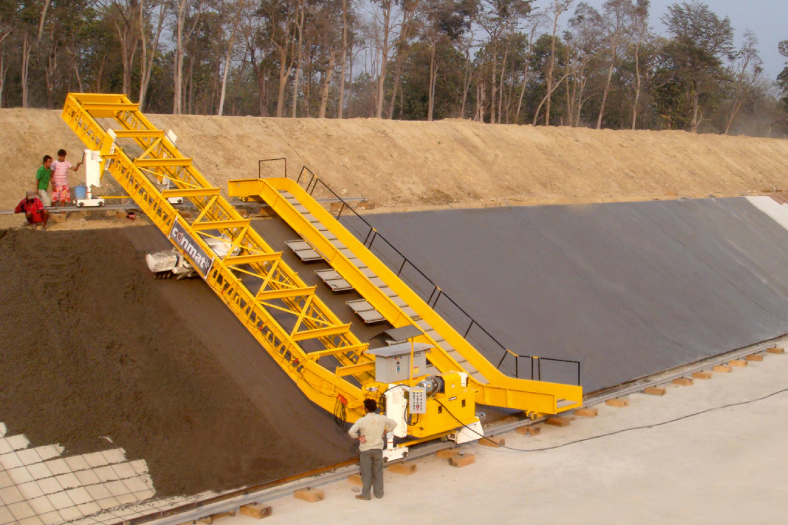Logistics Market: Fast Forward
Logistics has moved into the forefront and slowly becoming the backbone of Indian economy
Logistics encompasses the entire value chain of the economy, from imports to exports. The logistics industry in India is complex and still at a nascent stage. It has come a long way over the years and despite the slowdown in economy it has shown growth. The future development of logistics sector depends on many factors like infrastructure, technology, suitable framework, etc. Here is an overview of Indian logistics industry. The article highlights current scenario, challenges, future development and strategy.
Current scenarioIn the present context of globalisation, in the sourcing as well as selling markets, logistics has redefined where products are made and sold. Logistics is an important variable for India’s rise as one of the fastest developing economies over the last decade.
Adarsh Hedge, Director, Allcargo Logistics Ltd. says, “At the present context of economic turmoil within the country and the global landscape, the new directions in logistics is toward creating efficiency in existing infrastructure, identify critical bottlenecks in logistics which are either hampering or slowing trade and focusing on creating solutions. Thus more emphasis will be laid on matching global standards in these areas to compete more efficiently and also reduce the cost of logistics transactions while operating in an economy like India.”
The line between international and domestic standards is diminishing at a rapid pace, particularly in the logistics space. More international companies are making their bases in India, whereas efficient Indian multinationals are buying companies overseas.
“In terms of global drivers, multinational companies are in a way laying the foundation to educate the Indian markets, service providers, government, policy makers in terms of innovating new ways to attract trade and commerce and implement suitable policies. These international companies see India as the key market for next level of growth for their products and services, thus they are aligning their logistics value chain to suit the market and consumers, as well as bring the tried and tested efficiencies of processes in the domestic market, “ Mr Hedge added.
According to Gautam Dembla, Director and CEO, Spear Logistics Pvt. Ltd., “The logistics sector in India is currently pegged between $ 90-125 billion, and has become an area of priority. Years of high growth in the Indian economy has resulted in large volumes of traffic, thereby providing opportunities in areas such as transportation, warehousing, freight forwarding, express cargo, container & shipping services etc. Going forward, the strength of the logistics sector is likely to be one of the key determinants of the pace of future growth, of the economy.”
However Dhruv Kotak, Joint Managing Director, J M Baxi Group observes, “The logistics industry is a subset of the Indian economy. With the current drop in GDP, the logistics industry has also witnessed a muted growth. Further, with drop in FDI inflows and policy paralysis under the previous regime, growth has been stunted in almost every sector, leading to either excess capacity in the logistics industry, unhealthy competition or lack of investments.”
Modern v/s TraditionalThe logistics scenario in India has changed drastically over the years. The growth of logistics sector has continuously pushed service providers to introduce best practices and new operations. Modern practices are replacing traditional ones because of the prospective it carries.
Talking on this regard Mr Kotak says, “There is a subtle difference between the two. Modern logistics is all about technology, economies of scale, modern handling techniques, use of information technology, better quality infrastructure, which helps to deliver a faster, reliable, cost effective and safer gamut of services under a single roof. On the contrary, conventional or traditional methods make use of the available resources to perform a logistics operation. There is no element of innovation or integration.”
Mr Hedge observes, “Modern logistics is moving toward integrated services wherein a single service provider will manage end-to-end services, creating efficiency and optimisation of resources. As international companies scale their presence across India and Indian companies compete in the global space, integrated logistics will play a crucial role in managing the value chain, as compared to the traditional multi-vendor multi-service model.”
Logistics service providers aim at moving from simply delivering what their customers tell them to providing solutions for complex supply chain problems. The approach is to build capability for its clients by becoming a partner in its supply chain rather than just a service provider. “Service providers need to provide value added services and go beyond just being an enabler to their clients. Smart technology in the form of warehouse and transport management systems that provide real time information are also key requirements for a modern logistics operation,” comments Mr Dembla.
Key areasAs the country moves ahead, logistics infrastructure will be the key variable to make or break the GDP growth of our country. Appropriate infrastructure, advanced technology, private investment, and transparency in policies are the areas that can contribute in development of logistics industry of the country.
Given the limitation of infrastructures in aiding quick, timely and efficient mediums, logistics companies across India have adopted, and innovated their services quite well over the years to reach markets quite fairly. This is evident from the fact that goods from consumer durables, to fast moving products are available across markets. “The vast demographic market of India cannot be served or made efficient with government intervention alone, it needs to collaborate with private expertise to collectively leverage the opportunity and mitigate macroeconomic challenges,” says Mr Hedge.
Case in point has been the effectiveness of world-class Container Freight Stations (CFS) and Inland Container Depots (ICD) near ports and industrial hubs across India. These infrastructures operated by leading private companies have been one of the most important reasons for creating efficiencies at our ports. Additionally emergence of coastal shipping for moving bulk, break bulk products through India’s 7,000 odd kilometers of coastline has also led to decongestion of roads and rail network for logistics transportation.
Construction of massive state-of-the-art logistics parks at key distribution hubs are helping to meet the specialised warehousing needs of industries. This strong growth is expected to continue, with the share of the non-major ports increasing further. Technologies help manage logistics and inventory problems faced by companies. According to Mr Dembla, “Visibility and improved accuracy of the information shared is greatly enhanced apart from the development of more collaborative relations across the supply chain.”
Mr Kotak believes ‘policy’ can play the most critical role in growth of logistics industry. He says, “A single change will have a huge impact on the industry. Implementation of GST can change the whole dynamics of warehousing and distribution. Diesel subsidy and/or withdrawal can change the preferred mode of transportation. Notwithstanding, growth of the logistics industry is dependent on the economy. If there is a robust growth in economy, logistics will grow along with it.”
Challenges & SolutionsSeveral challenges remain before the Indian logistics sector and its future success depends on the ability of the industry to overcome these. Some of the challenges include lack of infrastructure, policies and warehousing. Experts believe suitable solutions will take the Indian logistics industry to next level.
According to Mr Hedge, “Lack of infrastructure connecting various transportation mediums is one of the most crucial challenges for the entire sector. Infrastructure does not mean road or rail only; it also spans ports, connectivity of roads and rail to ports, state level check points for clearance, single-window documentation touch points and transparent tax policies.” Almost every sector within an economy depends largely on logistics thus facing challenges today. “With appropriate policy decision on war footing, the entire economy with benefit tremendously,” Mr Hegde adds.
According to Mr Kotak warehousing faces a huge challenge today. Citing the bottlenecks he says, “The price of high-quality warehousing is not realisable. The consumer or customer is not able to pay for the quality and in the bargain, compromises on low-quality solutions. The push has to come from the end-users. If they demand good quality, solutions will also be created. This can be encouraged by the government also. Warehousing does not enjoy infrastructure status. By way of an Integrated Warehousing Policy, the sector can get a fillip and the services could be made available at a reasonable price to the end-user.”
Policies affecting growthIn spite of holding a lot of promise, the logistics sector in India suffers from several complexities. With a stable government at the centre, timely implementation of projects and transparent decision making, government will surely drive the new growth across logistics sectors.
Mr Dembla observes, “Complexities include significant inefficiencies in transportation, poor condition of storage infrastructure, a complex tax structure and a low rate of technology adoption. Reforms in the form of GST would perhaps be the single largest facilitator to both the economy and the logistics industry.”
Mr Kotak says, “The roadmap is bound to usher in many changes. Implementation of GST will kick start the hub and spoke model of warehousing, 3 PL logistics. A 10-year tax holiday for warehousing will see high quality modern distribution centres coming up in various locations.”He further added, “Changes to Government subsidy on diesel, cross subsidisation of passenger freight with cargo freight by railways, promotion of coastal shipping, promotion of containerisation, development of grain silos and cold storages through various policy support, SEZ and FTWZ tax correction (DDT & MAT) and other policy changes in the sector will have a huge impact on how the logistics industry will shape-up in the coming years.”
According to Mr Hedge, “Now that ministry of transportation and shipping are under one leadership, challenges will be tacked with a holistic approach and with unison across projects.” The government’s and ministry’s pro economic policies and facilitator role will have a positive effect for the entire economy. Private players will also get a boost to evaluate and leverage more opportunities boosting India’s market as a trade hub.
Future direction & strategy The growth in the economy in the future is likely to be driven by increased activity in the manufacturing and retail sectors. To meet this challenge, the logistics industry will have to step up and provide value enabling solutions by creating an environment for such a transition. The Indian logistics sector growth depends on the growth of its soft infrastructure like training and policy framework as much as the hard infrastructure.
Mr Hegde states, “From India’s perspective, the investment has to be focused on building hard infrastructure such as road, ports, roads connecting ports, rail connectivity, level playing fields and trade enhancing policies for coastal shipping, seamless approvals for movement of heavy project cargo within the country and of course timely policy implementation of initiatives such as GST across the economy.”
According to Mr Dembla, “Co-ordination in infrastructure planning, improvement in tax regimes, urgent implementation of GST would be most fundamental change in the logistics scenario and will change the landscape entirely. Reforms in urban planning, improving the levels of dialogue with the logistics industry are essential to bring about the desired transition within the industry.”
He further adds, “It is also important that we get to government and other regulatory mechanisms in the country to provide an environment that understands our importance as being prime movers in getting products to consumers and customers across the country.”
Commenting on strategy for future development Mr Kotak says, “The focus area should be ‘technology’. Modern technology in the logistics Industry will transform the way we move cargo in our country. Today, the logistics cost is very high, coupled with low-quality service standards. This has to change. By way of policy, budgetary support, growth or demand, it is necessary to deploy new technology in the logistics sector for overall benefit to the trade. Transaction costs, multiple handling, pilferage, material losses etc will reduce; at the same time efficiency, reliability, benefits from volume of scale and safety in the logistics supply chain can be achieved.”
ChallengesRoad• Inadequate road network coverage – poor quality of roads• Trucking industry is highly fragmented• Multiple checkpoints and permits required at every state border
Rail• Important rail networks are saturated• Rail freight tariffs are high• Rail terminal quality is poor• Less flexibility in carrying different types of products• Long transit time• Lack of cross-dock facilities at rail heads
Ports• High turnaround time• Coastal shipping has not taken off due to high port charges• State of ICDs or CFSs not satisfactory
Air• High fuel costs and tariffs• Shortage of skilled manpower• Congestion at airports resulting in a higher waiting time.
Cookie Consent
We use cookies to personalize your experience. By continuing to visit this website you agree to our Terms & Conditions, Privacy Policy and Cookie Policy.









